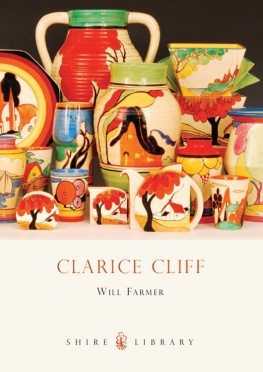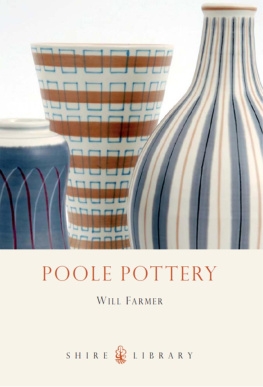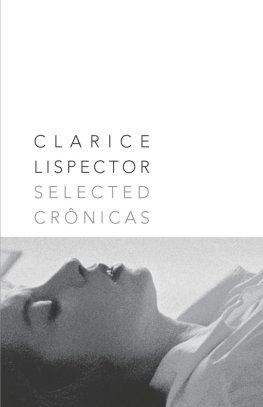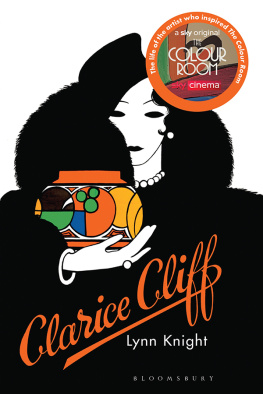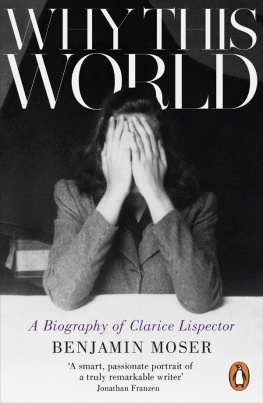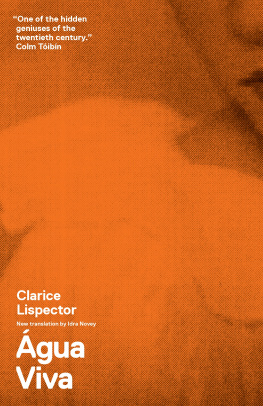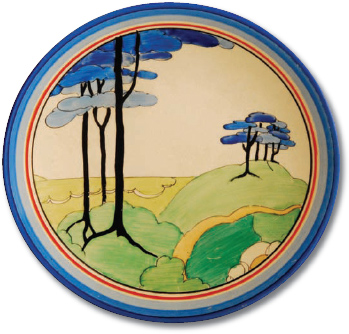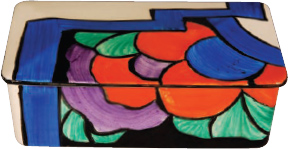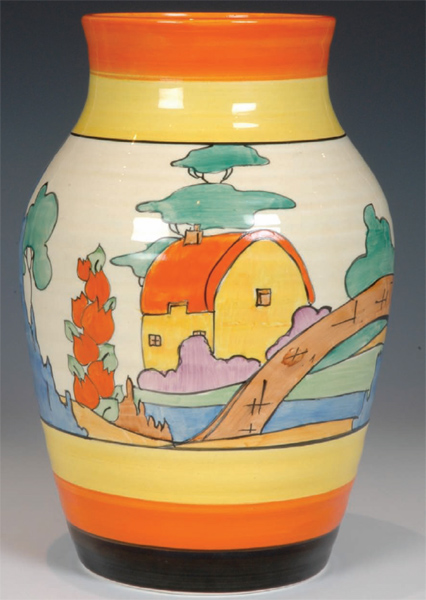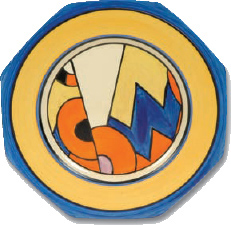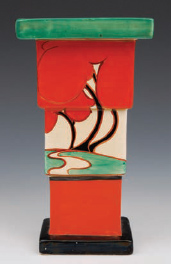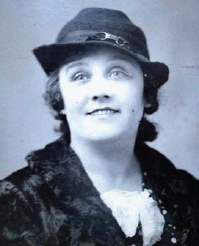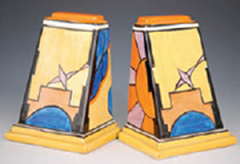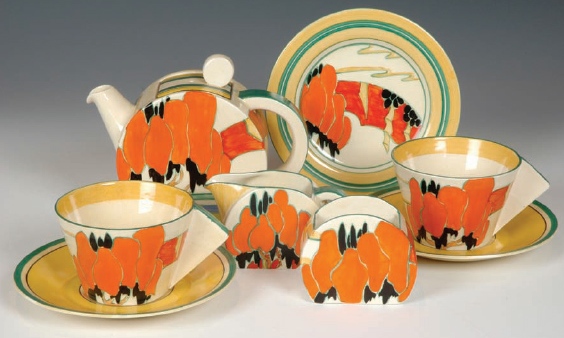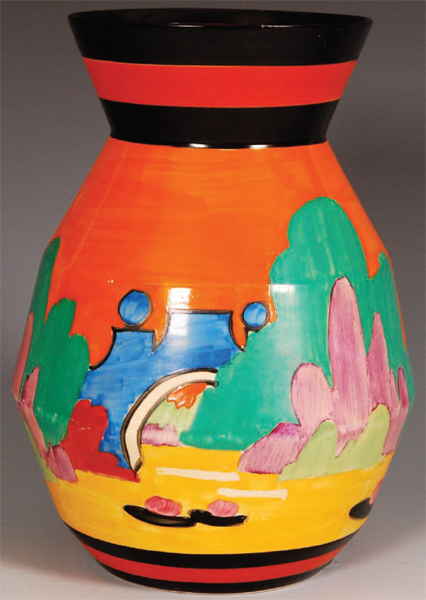CLARICE CLIFF
Will Farmer
SHIRE PUBLICATIONS
CONTENTS
INTRODUCTION
An Isis vase, hand painted on glaze in Orange Roof Cottage, 1932.
C LARICE CLIFF is one of the most instantly recognisable ceramic designers of the twentieth century. Her distinctive Bizarre pottery, with its vibrant colour palette and dynamic patterns on equally daring forms, epitomises the mood of the Jazz Age.
During the Depression, Clarice flooded homes with colour, offering her customers a glimpse of something new and exciting, far removed from the formal and staid styles of the first quarter of the century. Hers was a true success story founded on hard work, determination and an unwavering clear vision. Clarice was different, as was her ceramic art: a unique combination of inspired thought and design brilliance that created the perfect recipe for success.
Clarice was a modern and fashionable woman of her time who demonstrated that she also had the skill to be a successful businesswoman. As an industrial designer she had great intuition for what the public wanted, and between 1927 and 1936, at a time of high Art Deco, her shapes, colours and patterns delivered where her competitors fell short. Whilst many other ceramic designers looked back, Clarice grabbed the new with both hands: Art Deco, Modernism and Cubism. With an open mind and positive attitude she recognised the best qualities in these movements and developed them into commercially successful domestic wares.
Inspired by themes and ideas of art and design movements from around the world, Clarices longing for change was transferred to the surface of the pots she so ingeniously created. This, combined with a shrewd understanding of business, resulted in a product that unashamedly burst onto the market, introducing the consumer of the day to an entirely new style.
Such was the demand for Clarices work that, at its peak, the A. J. Wilkinson factory was recorded as producing 18,000 pieces a week with a turnover of 2,000, double that of her nearest competitor. Her wares were exported around the globe as far away as North and South America, Canada, South Africa, Australia and New Zealand. Towards the end of the 1930s, however, Clarice, ever wise in business, realised that the entire spirit of the times was about to change and that she could no longer be quite so daring or experimental. Her wares still continued to sell but had lost the dynamic flair and excitement of those early years. The onset of the Second World War was the final factor that took Clarice away from the work she loved. The post-war years also saw changes in taste combined with mass production techniques that left little room for labour-intensive hand-painted wares.

A group of wares comprising a pair of shape 405 bookends, twin handled Lotus jug, shape 372 vase and octagonal sandwich tray, all hand-painted on glaze in Football, 1929.
An octagonal plate hand painted on glaze in Blue W, 1929.
Todays modern approach to women in business makes it difficult to appreciate just how successful Clarice was. Colley Shorter, her boss and later her husband, was a genius at promotion and publicity, and the levels of interest and press coverage received by her products were unprecedented; over 360 articles and reviews of her distinctive Bizarre ware were published during the key years of 1927 to 1936. Compare this to one of her most well-known competitors of the day Susie Cooper who achieved barely twenty in the same period. In recent years a huge amount of new research has re-appraised Clarice the designer, the businesswoman and, most importantly, the artist.
A shape 369 vase hand painted on glaze in Autumn (red), 1930.
An original studio portrait of Clarice Cliff, c. 1930.
In 1931, the Pottery Gazette hailed Clarice as a pioneer of advanced thought and assured buyers that her work represented heirlooms of the future. Today salerooms across the world have seen Bizarre ware realise prices not only in thousands but in tens of thousands of pounds; it appears that the Pottery Gazette was indeed correct! Clarices vast legacy of pattern and form has proved her to be one of the most important ceramic designers of the twentieth century.
A pair of shape 405 bookends hand painted on glaze in Sunray, 1929.
A Bon Jour shape early morning tea service hand painted on glaze in Solitude, 1933.
BEFORE BIZARRE
A shape 360 vase hand painted on glaze in Appliqu Avignon, 1930.
C LARICE was born in 1899 to a typical Staffordshire Potteries family and home. The daughter of Harry and Ann Cliff, she was one of seven children squeezed into a small terraced house in Meir Street, Tunstall, Stokeon-Trent. Like the majority of people from this industrial part of Staffordshire, she began life in a two up, two down home. Her father worked at the local iron foundry, whilst her mother took in washing to supplement the family income. It was a typical town with typical prospects. Children would often follow their parents job path; many found work in one of the hundreds of pot banks (pottery manufacturers) around the area. The options were few, and from an early age Clarice would have been acutely aware of the limited opportunities.
Unusually, Clarice was sent to a different school from that of her siblings; this possibly created an early sense of independence, which would later manifest itself more strongly in both her personality and career. From an early age her artistic abilities were evident and Clarice showed a desire to learn and apply her talents. Two of her aunts were decorators at a local pottery and she would often visit after school, lingering to watch the deft brushstrokes they executed so swiftly and easily. This early interest marked the start of what would develop into Clarices lifelong career.

